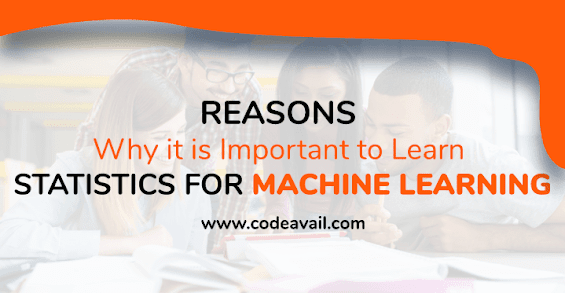Here is a blog shared by CodeAvail experts that discusses details about why it is necessary to learn statistics for machine learning.
Learn Statistics For Machine Learning
A close relationship exists between machine learning and statistics. Machine learning and statistics can sometimes blur together. Nevertheless, there are some ways that fall under the category of statistics. This is also helpful and valuable when one is working on a project involving machine learning. To work efficiently in a machine learning predictive modeling project, it is necessary to use statistics methods.
What is statistics and machine learning?
Mathematically, it is one of the strongest and most important parts. Data organization, collection, presentation, and outline are all part of statistics, which is the part of mathematics that is used to work with data.
To put it another way, statistics is about producing some methods to make the raw data easier to understand. Applying statistical methods to industrial, scientific, and social problems is achieved using the statistic model.
Examples of statistics for machine learning
Some examples are provided below. Machine learning projects involve the application of statistical methods.
In order to solve a predictive modeling problem successfully, you need practical experience in statistics.
Data understanding
Model evaluation
Data cleaning
Model presentation
Data selection
Model selection
Model prediction
1) Data understanding:
Having a cozy handle on both the conveyances of variables as well as their connections is necessary for understanding data. Domain expertise may exist or some parts of this information require domain knowledge.
2) Model Evaluation:
Evaluation of a learning technique is vital to a successful predictive demonstration.
When using a model for making estimations on data that was not seen during formulation, the expert's expertise must be estimated. In most cases, experimental design is used to prepare and evaluate a predictive model.
3) Data Cleaning:
Space is not always a perfect vantage point. Despite the advanced nature of the information. Consequently, any downstream models or procedures that utilize the data could be damaged by processes that can damage the accuracy of the data.
4) Model Presentation
Following the preparation of the final model, it can be tested with stakeholders before being utilized or used to get accurate predictions based on real data.
When talking about an ultimate model, it is important to give a description of its expected skills.
5) Data Selection:
It is possible that not all variables and observations will be relevant in a model. Essentially, data selection is the process of reducing the amount of data to components that can be used to make good decisions.
6) Model Selection
A particular predictive modeling issue might be addressed by a variety of AI calculations. A strategy is chosen as a solution by selecting a model.
Depending on the issue, one may need to incorporate both a set of criteria from the partners and a careful assessment of the skills estimated by the strategies.
Conclusion
To understand statistics for machine learning, we have provided all the information you need here. Statistical computing is the subfield of mathematics, whereas machine learning is a part of artificial intelligence and computer science. As part of your work on the modeling project, you have seen the importance of statistical methods.

No comments:
Post a Comment